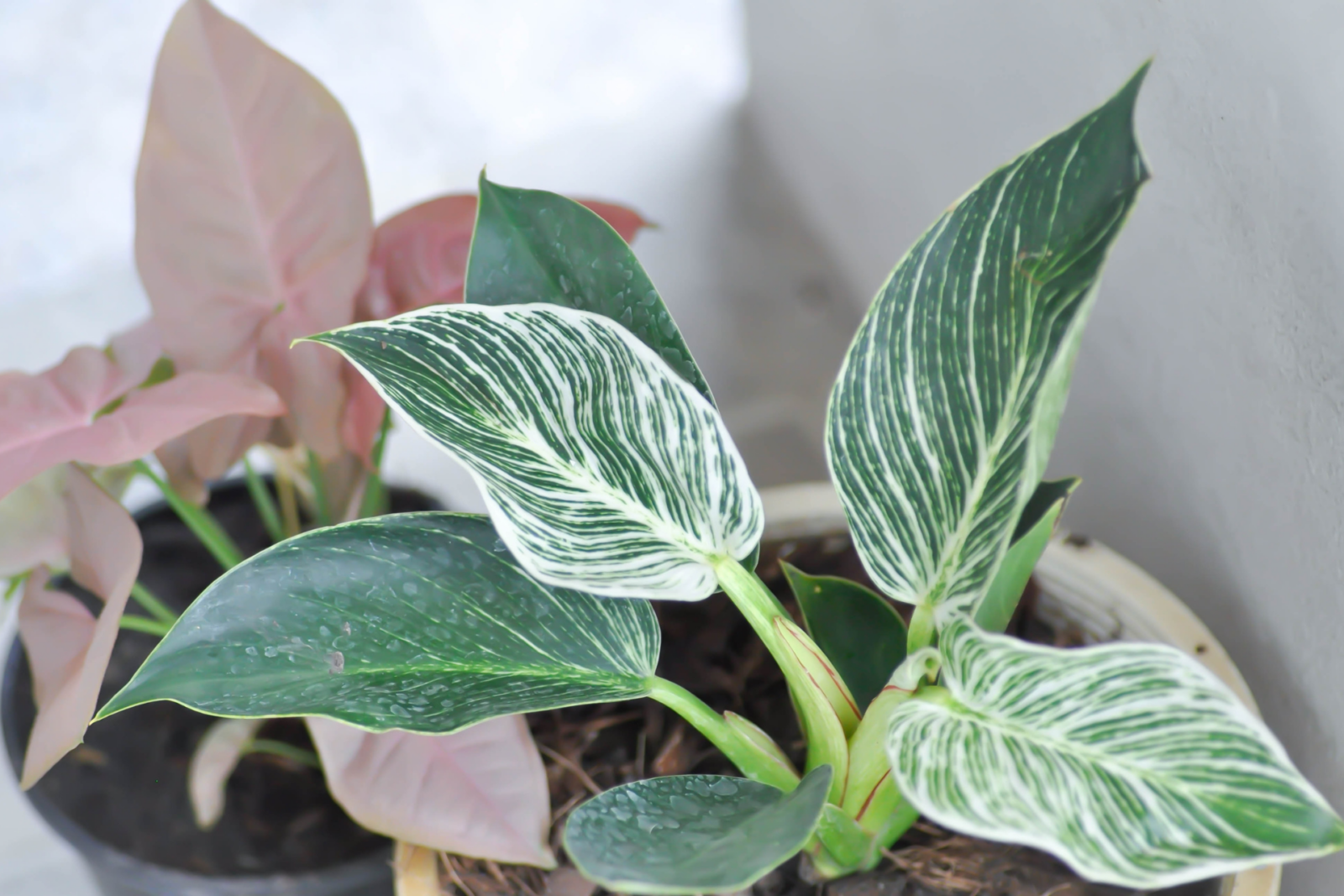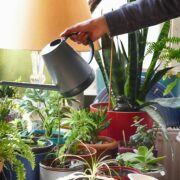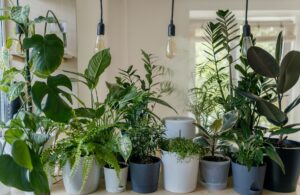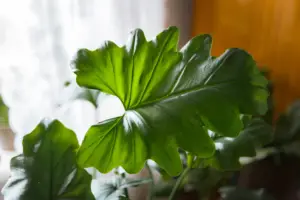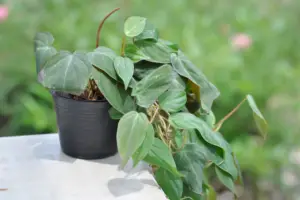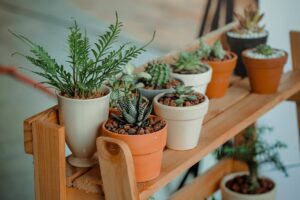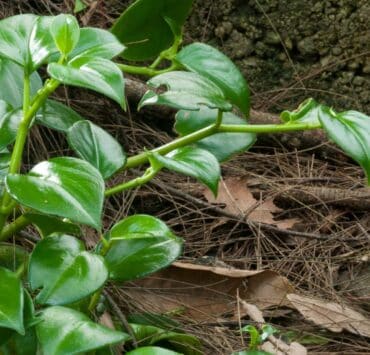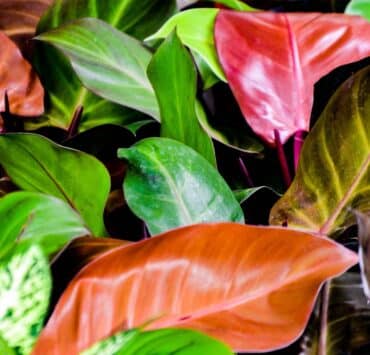Light Requirements
Philodendron Birkin thrives in bright, indirect light. It can tolerate lower light levels, but it may grow more slowly and have fewer variegated leaves. Avoid placing it in direct sunlight, as this can scorch the leaves and cause them to turn yellow.
Watering
Like most tropical plants, Philodendron Birkin prefers consistently moist soil. However, it’s essential not to overwater it, as this can lead to root rot. Allow the top inch of soil to dry out before watering again, and ensure that the pot has adequate drainage.
Humidity
Philodendron Birkin thrives in high humidity, but it can tolerate lower levels. If the air in your home is dry, consider using a humidifier or placing a tray of water near the plant to increase the humidity.
Soil
Philodendron Birkin prefers well-draining soil that’s rich in organic matter. You can use a high-quality potting mix, or make your own by mixing equal parts peat moss, perlite, and vermiculite.
Fertilizing
During the growing season, you can fertilize your Philodendron Birkin once a month with a balanced, water-soluble fertilizer. However, be sure to follow the instructions carefully and avoid over-fertilizing, as this can burn the roots.
Pruning
To encourage bushier growth, you can pinch off the tips of the stems or prune back any leggy or overgrown parts. Use a clean, sharp pair of scissors or pruning shears and make clean cuts just above a leaf node.
Propagation
Philodendron Birkin is relatively easy to propagate from stem cuttings. Simply take a cutting with at least two nodes, dip the cut end in rooting hormone, and plant it in a pot with moist soil. Keep the soil moist and place the pot in bright, indirect light. In a few weeks, you should start to see new growth.
Philodendron Birkin is a beautiful and relatively easy-to-care-for plant that can add a touch of tropical flair to any home. With proper light, watering, and humidity, it can thrive and produce stunning variegated leaves. Whether you’re a seasoned plant parent or a beginner, Philodendron Birkin is definitely worth considering for your collection.
Most Asked Questions
Are philodendron Birkin rare?
Philodendron Birkin is considered a relatively rare plant, particularly in comparison to other popular philodendron varieties such as the Heartleaf Philodendron or the Monstera Deliciosa. It is a newer hybrid variety, developed in the last decade or so, and as a result, it is not as widely available as some other philodendron varieties. However, it is becoming increasingly popular among plant enthusiasts, and it can be found at some specialty nurseries and online plant shops.
Is philodendron Birkin hard to care for?
Philodendron Birkin is considered to be relatively easy to care for, making it a great choice for beginners or anyone looking for a low-maintenance plant. It prefers bright, indirect light, consistently moist soil, and high humidity. It can be susceptible to root rot if overwatered or placed in too much shade, but as long as its basic care needs are met, it should thrive.
Why are philodendron Birkin so expensive?
Philodendron Birkin can be expensive for a few reasons. First, it is a relatively rare and in-demand plant, so the limited supply can drive up the price. Second, it can take some time for the plant to mature and develop its distinctive variegation, which can also contribute to the higher price tag. Finally, like many houseplants, the cost of Philodendron Birkin can be influenced by market trends and fluctuations in supply and demand.
How do you take care of a philodendron Birkin?
To care for a philodendron Birkin, place it in bright, indirect light, keep the soil consistently moist but not waterlogged, maintain high humidity, and fertilize once a month during the growing season. Pinch back the tips of the stems or prune any leggy or overgrown parts to encourage bushier growth. Propagate the plant from stem cuttings to create new plants.
How do I keep my philodendron Birkin happy?
To keep your philodendron Birkin happy, provide it with bright, indirect light, maintain consistently moist soil, keep humidity levels high, and fertilize regularly. Avoid overwatering or placing the plant in direct sunlight, as this can damage the leaves. Prune the plant occasionally to encourage bushier growth.
Where should a philodendron Birkin be placed?
Philodendron Birkin should be placed in a bright, indirect light location. It can tolerate lower light levels, but it may grow more slowly and have fewer variegated leaves. Avoid placing it in direct sunlight, as this can scorch the leaves and cause them to turn yellow.
How big will a philodendron Birkin get?
Philodendron Birkin can grow up to about 2 to 3 feet tall and wide when fully mature. However, the growth rate can vary depending on the conditions in which the plant is grown.
Do philodendron birkins grow slow?
Philodendron Birkin can grow relatively slowly, particularly in lower light conditions. However, with proper care and conditions, it can also grow quite quickly.
What are the common problems with philodendron Birkin?
Common problems with philodendron Birkin include overwatering, which can lead to root rot, and pest infestations, particularly of mealybugs or spider mites. The plant may also develop brown tips or yellowing leaves if it’s not getting enough light or is being overwatered.
How often should you water a Birkin plant?
Philodendron Birkin prefers consistently moist soil, but it is important not to overwater it, as this can lead to root rot. Allow the top inch of soil to dry out before watering again, and ensure that the pot has adequate drainage. Depending on the conditions in which the plant is grown, this may mean watering once a week or more or less frequently.
How do you make a philodendron Birkin bushy?
To make a philodendron Birkin bushy, pinch off the tips of the stems or prune back any leggy or overgrown parts. Use a clean, sharp pair of scissors or pruning shears and make clean cuts just above a leaf node. This will encourage the plant to branch out and produce more foliage.
Is philodendron Birkin hard to grow?
Philodendron Birkin is considered to be relatively easy to grow, particularly if its basic care needs are met. It prefers bright, indirect light, consistently moist soil, and high humidity, but it can tolerate lower light levels and lower humidity. It can be susceptible to root rot if overwatered or placed in too much shade, but with proper care, it should thrive.
Do philodendron birkins like to be misted?
Philodendron Birkin does like to be misted, particularly if the air in your home is dry. Misting can help to increase humidity levels around the plant and keep the leaves looking healthy and glossy. However, misting should not be the only source of moisture for the plant, as it also requires consistently moist soil.
Do Birkin plants like to be root bound?
Philodendron Birkin does not necessarily like to be root bound, but it can tolerate being slightly pot-bound. If the plant becomes too crowded in its pot, it may stop growing or become more susceptible to root rot. To prevent this, you can repot the plant every 1-2 years or when it outgrows its current container.
Does philodendron Birkin bloom?
Philodendron Birkin is not typically grown for its flowers, and it may not produce blooms at all, particularly when grown indoors. However, if it does bloom, the flowers are typically small and inconspicuous. The plant is prized more for its striking foliage than for its flowers.
